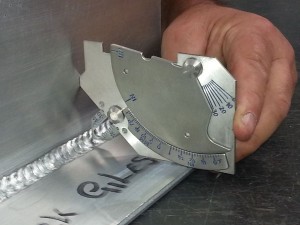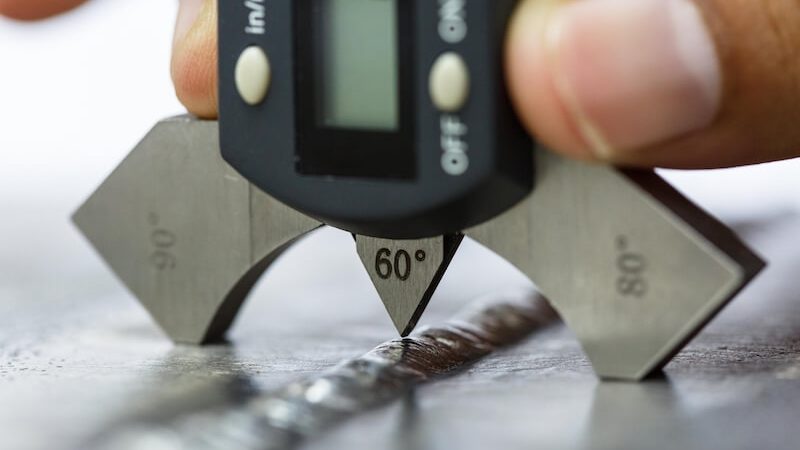Discovering Advanced Devices and Techniques for Accurate Welding Examination
In the world of welding inspection, the pursuit of accuracy and reliability is paramount, spurring the development of advanced tools and methodologies. Technologies such as phased array ultrasonic testing and digital radiography are transforming problem detection, providing unmatched precision in identifying welding flaws. Laser scanning innovations and computerized assessment systems, furnished with synthetic intelligence, are redefining the landscape by reducing human mistake and boosting safety and security procedures. As these sophisticated methods continue to advance, they promise not just to transform evaluation techniques yet additionally to increase interesting concerns regarding the future of quality control in industrial applications.
Ultrasonic Testing Innovations
Ultrasonic screening technologies regularly represent the leading edge of innovations in welding inspection innovations. These advancements have dramatically boosted the ability to detect and evaluate gaps within bonded frameworks, making certain enhanced stability and safety.

Furthermore, innovations in software formulas for information evaluation have improved the accuracy of problem discovery and sizing. Automated ultrasonic testing systems currently provide high-resolution imaging, making it possible for detailed evaluations of weld top quality. These systems are typically incorporated with advanced visualization tools, which promote the analysis of results.
Radiographic Evaluation Methods
While ultrasonic screening innovations have set a high requirement in non-destructive exam, radiographic evaluation methods remain to play an integral role in welding evaluation by supplying one-of-a-kind insights into material integrity. Radiographic testing (RT) employs making use of X-rays or gamma rays to permeate products, producing a radiograph that aesthetically represents the interior structure of a weld. This imaging ability is very useful for finding subsurface defects such as porosity, inclusions, and cracks that may not be visible through surface evaluations.
The process involves putting a radiation source on one side of the weld and a detector on the opposite side. Variants in product density and thickness affect the attenuation of the rays, creating a different image that precisely defines flaws. RT is particularly helpful for evaluating intricate geometries and thick areas where various other approaches might fail.
Regardless of its efficiency, radiographic examination has to be conducted with strict adherence to safety protocols due to the hazardous nature of ionizing radiation. In addition, the analysis of radiographs requires competent workers, as the top quality of the evaluation directly influences the dependability of the inspection. As a result, continuous developments in digital radiography are enhancing photo quality and interpretation efficiency, enhancing RT's critical duty in ensuring weld top quality.
Laser Scanning Advancements
Accepting laser scanning innovation in welding assessment has actually reinvented the analysis of weld high quality and stability. Unlike standard assessment methods, laser scanning supplies fast data purchase, substantially improving the performance and precision of weld examinations.
Laser scanning advances have actually brought about substantial renovations in characterizing and discovering surface area problems such as porosity, absence of fusion, and damages. The high-resolution information enables assessors to do detailed analyses, making certain that welds satisfy strict industry criteria. Moreover, this approach supports the growth of digital documents, promoting long-term quality control and traceability.
Additionally, laser scanning modern technology incorporates perfectly with software program services designed for automated issue detection and analysis. The resultant data can be quickly shared and evaluated, advertising collaborative decision-making procedures. As markets remain to demand greater requirements for weld top quality, laser scanning continues to be at the center, offering unparalleled precision and performance in welding evaluation.
Automated Examination Systems

Automated evaluation systems offer the benefit of uniformity, getting rid of human mistake and subjectivity from the examination procedure. They are made to run in numerous atmospheres, explanation from production floors to remote area sites, guaranteeing extensive insurance coverage. Welding Inspection Madison. These systems can be set to stick to particular welding standards and standards, providing comprehensive records and documentation for top quality control functions
Furthermore, the assimilation of cloud-based platforms facilitates the storage space and analysis of substantial amounts of inspection information. This enables pattern evaluation and predictive upkeep, enabling manufacturers to resolve prospective concerns prior to they escalate. The fostering of computerized evaluation systems is a critical step towards boosting the integrity and performance of welding procedures in commercial applications.

Enhancing Security and Performance
A significant aspect of enhancing safety and effectiveness in welding assessment exists in the assimilation of innovative technologies that streamline operations and minimize dangers. The adoption of advanced non-destructive testing (NDT) methods, such as ultrasonic screening, phased range ultrasonic screening (PAUT), and radiographic screening, plays an essential role in ensuring structural honesty without endangering the security of the employees included. These strategies permit comprehensive assessments with very little downtime, decreasing prospective hazards connected with typical methods.
Furthermore, the application of real-time information analytics and artificial intelligence algorithms has changed the method inspection information is translated. By utilizing predictive analytics, possible problems can be identified prior to they materialize into vital failures, making certain prompt interventions and upkeep. This proactive method substantially boosts operational efficiency and security in welding processes.
Moreover, remote inspection modern technologies, including drones and robotic spiders furnished with high-resolution cameras, make it possible for inspectors to analyze hard-to-reach areas without subjecting them to dangerous conditions. This not only enhances examination accuracy however additionally decreases human threat. By leveraging these sophisticated tools and approaches, industries can attain greater security requirements and operational effectiveness, inevitably causing more lasting and reliable welding inspection practices.
Conclusion
The combination of innovative devices and approaches in welding assessment substantially boosts defect discovery and ensures structural integrity. Welding Inspection Madison. Innovations such as phased range ultrasonic testing, see post digital radiography, and laser scanning enhance problem characterization, while automated assessment systems and AI minimize human mistake. Remote innovations help with safe evaluations in unsafe environments, advertising a proactive maintenance approach. These advancements not just raise examination performance yet additionally add to improved security and quality assurance in commercial welding applications.

Ultrasonic screening developments regularly stand for the forefront of improvements in welding inspection innovations.While ultrasonic screening developments have set a high criterion in non-destructive exam, radiographic inspection techniques continue to play an essential duty in welding inspection by using unique insights right into product integrity.Welcoming laser scanning technology in welding assessment has actually reinvented the analysis of weld high quality and honesty. As markets proceed to demand higher criteria for weld quality, laser scanning continues to be at the leading edge, offering unrivaled accuracy and efficiency in welding assessment.
Automated inspection systems supply the advantage of uniformity, removing human mistake and subjectivity from the evaluation procedure.